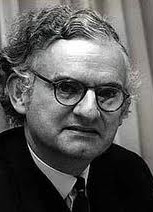-
(b.) -1924(d.)1998 July 17
Bio/Description
A British applied mathematician, known for his pioneering work in the field of aeroacoustics. He specialized in fluid dynamics, and worked at the National Physical Laboratory, Trinity College, Cambridge and between 1946 and 1959 at the University of Manchester where he held the Beyer Chair. He then moved from Manchester to become director of the Royal Aircraft Establishment at Farnborough. There he worked on the development of television and communications satellites, and on the development of manned spacecraft. This latter work was used in the development of the Concorde supersonic airliner. In 1955, together with G. B. Whitham, he set out the first comprehensive theory of kinematic waves (an application of the method of characteristics), with a multitude of applications, prime among them fluid flow and traffic flow. His early work included two dimensional aerofoil theory, and supersonic flow around solids of revolution. In addition to the dynamics of gas at high speeds he studied shock and blast waves. He is credited with founding the subject of aeroacoustics, a subject vital to the reduction of noise in jet engines. Lighthill's eighth power law states that the acoustic power radiated by a jet engine is proportional to the eighth power of the jet speed. He also founded non-linear acoustics, and showed that the same non-linear differential equations could model both flood waves in rivers and traffic flow in highways. In 1964 he became the Royal Society's resident professor at Imperial College London, before returning to Trinity College, Cambridge, five years later as Lucasian Professor of Mathematics, a chair he held until 1979, when he was succeeded by Stephen Hawking. He then became Provost of University College London (UCL) ? a post he held until 1989. He founded the Institute of Mathematics and its Applications in 1964. In 1968, he was awarded an Honorary Degree (Doctor of Science) by the University of Bath. In the early 1970s, partly in reaction to significant internal discord within that field, the Science Research Council (SRC), as it was then known, asked him to compile a review of academic research in Artificial Intelligence. His report, which was published in 1973 and became known as the "Lighthill report," was highly critical of basic research in foundational areas such as robotics and language processing, and "formed the basis for the decision by the British government to end support for AI research in all but two universities", starting what is sometimes referred to as the "AI winter." In ?Turing?s Cathedral? by George Dyson it is noted, that he was part of a review committee in 1954 at the time of the founding of the IAS.
-
Date of Birth:
1924 -
Date of Death:
1998 July 17 -
Gender:
Male -
Noted For:
Worked on the development of television and communications satellites -
Category of Achievement:
-
More Info:


